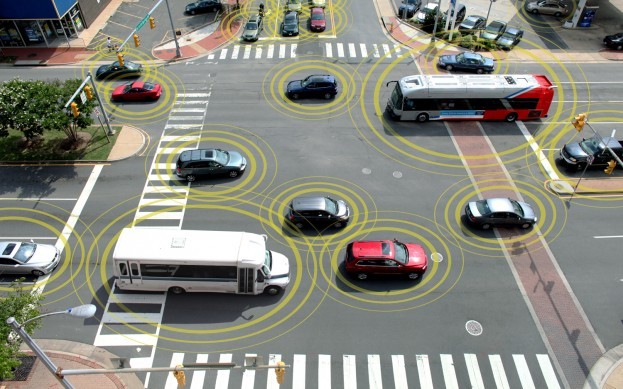Top 7 Innovations in Auto Safety

Have you heard about the talking car? No joke! The U.S. Department of Transportation and the University of Michigan are currently working on a vehicle-to-vehicle system that will allow cars to communicate with each other. The hope is that cars can utilize this ground-breaking system to alert one another of potential crashes and to also warn their drivers if they are about to make an unsafe manoeuvre.
The ability for cars to communicate with one another will be the latest in a line of innovative features designed to make cars safer. The automobiles of today are already much safer than their predecessors. In fact, many insurance companies, such as Budget Direct, may offer a discount on coverage to owners of current or late-model automobiles because these vehicles typically boast the latest in safety equipment helping to reduce the risk of injury to driver and passengers.
Here is a list of the top seven safety advances that have been made in automotive technology. These features have not only saved countless lives by protecting car occupants during a crash, they have also helped to prevent accidents from occurring in the first place.
Seatbelts
Seatbelts save lives. According to the National Roads and Motorists' Association, the state of Victoria in 1970 became the first in the world to make the use of seatbelts compulsory. Other states and territories as well as other countries soon followed suit. Studies conducted after seatbelt laws have been instituted have shown time and time again that death rates fall in the areas where these new regulations have been put into place.
Because seatbelts are so effective at saving lives, starting in 2012, legislation is introduced making seatbelt reminder systems mandatory in all new passenger vehicles.
To be effective, however, seatbelts must be used properly, and the shoulder strap should never be placed behind a person's back. In case of a severe crash a person who doesn’t wear the shoulder strap in its correct place gets whipped forward and backwards violently, which can cause severe injuries to the spine and even break their back.
Airbags
Although in Australian airbags are not mandatory and considered an additional safety feature of cars, they can help prevent injuries and fatalities during accidents by protecting passengers in cars that are equipped with these devices. Front airbags are designed to deploy during frontal collisions of approximately 25km per hour or more, while side airbags will deploy if the car is impacted from the side or should it roll over.
Anti-Lock Breaking Systems (ABS)
Before ABS brakes were developed, a driver who had to stop suddenly would have to remember to manually pump the brakes or risk locking them up and possibly losing his ability to steer. ABS systems rapidly pump the brakes for the driver, which allow them to better steer and control their vehicle. Many insurance companies offer discounts if your vehicle has ABS.
Electronic Stability Control (ESC)
The ESC technology senses when a car starts to lose traction and then uses the ABS system to apply brakes so that the driver regains control of the vehicle again. A report released by the Monash University Accident Research Centre showed that the use of ESC has been associated with reductions in single-vehicle and rollover crashes involving injuries.
Crumple Zone Design
Anyone who has been in an accident may be surprised at how easily cars are deformed by even a minor impact. Modern cars are actually purposely designed with crumple zones that can absorb the energy of an accident, so less of this force is transferred to the passengers inside the vehicle.
Tyres
Manufacturers have worked hard to create tyres that can work well in all types of driving conditions and can also resist punctures. The tyres of today are stronger and can grip the road better than their predecessors, even in difficult weather conditions.
Reversing Camera and Reverse Parking Sensor Systems
These camera systems allow drivers to perform reversing manoeuvres with confidence that they will not be running over or backing into obstacles. Many reversing camera systems offer full-colour images, while other systems alert drivers with acoustic signals to the distance to obstacles or oncoming objects.











